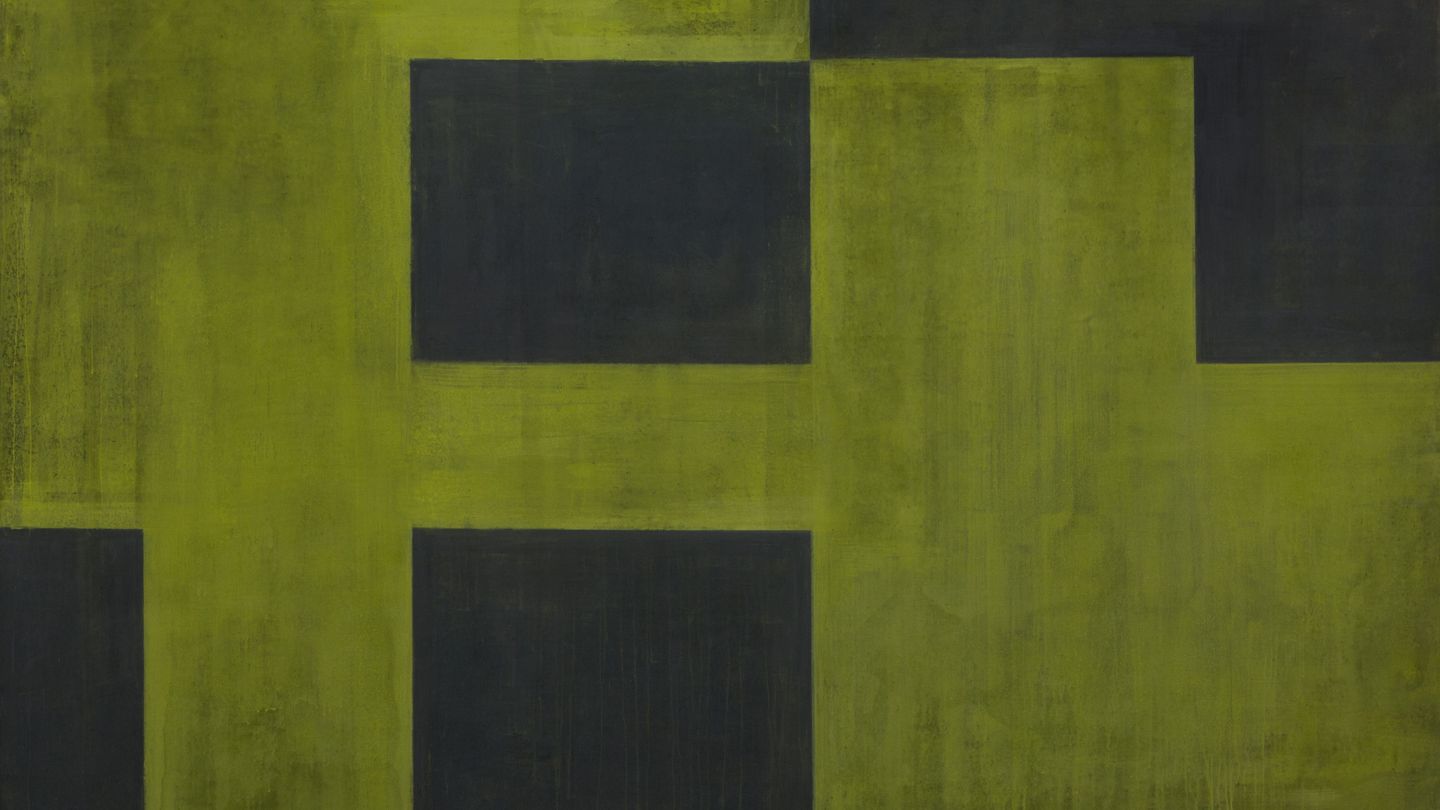Monochromie – Geometrie
–
This exhibition at Sammlung Goetz presents six artistic positions in non-representational painting.

–
This exhibition at Sammlung Goetz presents six artistic positions in non-representational painting.
With Alan Charlton, Helmut Federle, Imi Knoebel, Joseph Marioni, Alan Uglow and Günter Umberg.
These painters belong to a generation of artists who developed new concepts for monochrome or geometric painting after the end of the American Neo-Avant-Garde. In the sense of Frank Stella's dictum “What you see is what you see,” they insist on the factual reality of the painting while simultaneously referring to the world of ideas and concepts that lies behind it. Against the backdrop of the history of painting, an exciting context develops that raises questions about the relevance of the traditional medium. As Johannes Meinhardt writes in his accompanying essay to the exhibition in Sammlung Goetz, these artists explore the conditions and boundaries of the painting by analyzing its means (Charlton, Uglow, Knoebel), experience the painting in its aesthetic totality as a colored body (Marioni, Umberg) or give it compositional meaning (Federle). With paintings, objects and works on paper, the various artistic concepts enter into dialogue.
A colloquium with Alan Charlton, Helmut Federle and Joseph Marioni will be held on occasion of the exhibition opening on January 22, 1996 at Akademie der Bildenden Künste, Munich.
112 pages, 48 ill., softcover
German/English
1996, Kunstverlag Ingvild Goetz GmbH, Hamburg